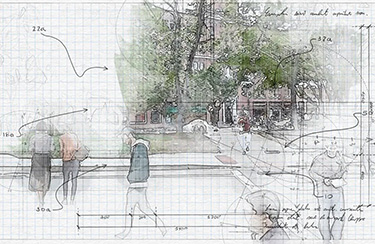Explore the future of walkable cities – and learn how to analyze and plan pedestrian-friendly environments with this online course from the MIT Department of Urban Studies and Planning.
In today’s rapidly changing urban landscape, and growing attention on climate change, public health and equitable access, walkability is more than an amenity—it’s a key strategy for achieving sustainable and livable communities globally. This course provides a strong foundation for understanding pedestrian mobility within broader urban systems, equipping you with the knowledge and skills to collaborate across fields, communicate the value of pedestrian improvements, and advocate effectively for better walking environments.
You’ll learn core concepts about pedestrian behavior, built environment influences on sustainable mobility, and policies that seek to shift the modale share of everyday movement across diverse urban settings. Through global case studies—from megacities to small towns—you’ll explore methods for evaluating pedestrian environments and unpack the policies, social dynamics, and design choices that influence walkability. By weaving together social, spatial, and behavioral perspectives, this course offers a fresh, human-centered way of thinking about urban streets and mobility systems.
Whether you're an urban or transportation planner, designer, policymaker, community advocate, or simply passionate about improving cities, this course will help you understand how pedestrian networks connect with sustainability, urban design, and issues of daily life.
Whether you're aiming to design safer streets, decarbonize a city, create more equitable mobility policies, or build more people-centered places, Introduction to Pedestrian Mobility in Cities gives you the knowledge and perspective to drive meaningful change.


